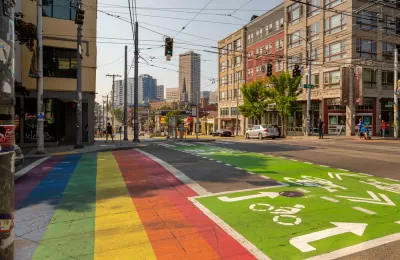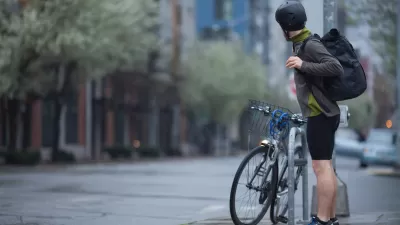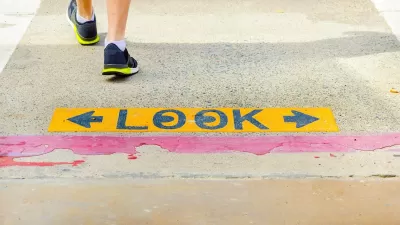The city released what it called a comprehensive review of its Vision Zero initiatives, but one critic argues the report doesn’t address some key opportunities for improving road safety.

The Urbanist’s Ryan Packer dissects the Seattle Department of Transportation (SDOT)’s recently released review of the city’s Vision Zero program. Although the city touted the report as a ‘top-to-bottom’ assessment, Packer argues that it only ‘skims the surface.’ In fact, “It focuses on a relatively narrow range of projects where the department was able to make progress on safety, and not on two larger categories: opportunities where safety improvements were ineffective, and opportunities where safety improvement were not included at all.”
“Despite all SDOT presentations starting with a rundown of the department’s vision and values, with safety near the top of the list, the report confirms many things stand in the way of safety improvements becoming fully embedded in everything that happens at the department.”
Packer details the report’s findings, which, for one, “offer a big opportunity for the general public to finally see what barriers exist to fully incorporating safety upgrades in the department’s daily work.” But Packer criticizes the report’s omission of unsuccessful projects and strategies, which could offer valuable lessons for the future.
Nevertheless, the report provides a “tidy list” of actions that SDOT may soon internalize, Packer hopes. The success of ‘rapid response’ interventions such as temporary bike lanes and safety improvements in the last year point to a way forward, if they can serve as models for broader action. Ultimately, Packer concludes, “any strategies are only going to be effective if local leaders allow SDOT to try bold things, and not reserve safety treatments to only the instances where there’s little pushback.”
FULL STORY: SDOT’s Top to Bottom Review of Vision Zero Barely Skims the Surface

Alabama: Trump Terminates Settlements for Black Communities Harmed By Raw Sewage
Trump deemed the landmark civil rights agreement “illegal DEI and environmental justice policy.”

Planetizen Federal Action Tracker
A weekly monitor of how Trump’s orders and actions are impacting planners and planning in America.

The 120 Year Old Tiny Home Villages That Sheltered San Francisco’s Earthquake Refugees
More than a century ago, San Francisco mobilized to house thousands of residents displaced by the 1906 earthquake. Could their strategy offer a model for the present?

In Both Crashes and Crime, Public Transportation is Far Safer than Driving
Contrary to popular assumptions, public transportation has far lower crash and crime rates than automobile travel. For safer communities, improve and encourage transit travel.

Report: Zoning Reforms Should Complement Nashville’s Ambitious Transit Plan
Without reform, restrictive zoning codes will limit the impact of the city’s planned transit expansion and could exclude some of the residents who depend on transit the most.

Judge Orders Release of Frozen IRA, IIJA Funding
The decision is a victory for environmental groups who charged that freezing funds for critical infrastructure and disaster response programs caused “real and irreparable harm” to communities.
Urban Design for Planners 1: Software Tools
This six-course series explores essential urban design concepts using open source software and equips planners with the tools they need to participate fully in the urban design process.
Planning for Universal Design
Learn the tools for implementing Universal Design in planning regulations.
Clanton & Associates, Inc.
Jessamine County Fiscal Court
Institute for Housing and Urban Development Studies (IHS)
City of Grandview
Harvard GSD Executive Education
Toledo-Lucas County Plan Commissions
Salt Lake City
NYU Wagner Graduate School of Public Service





























